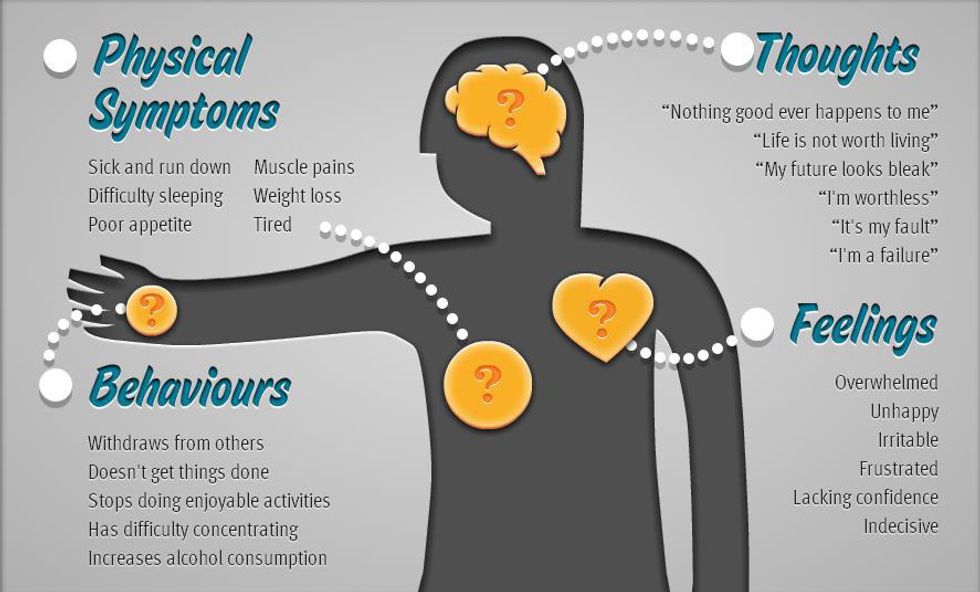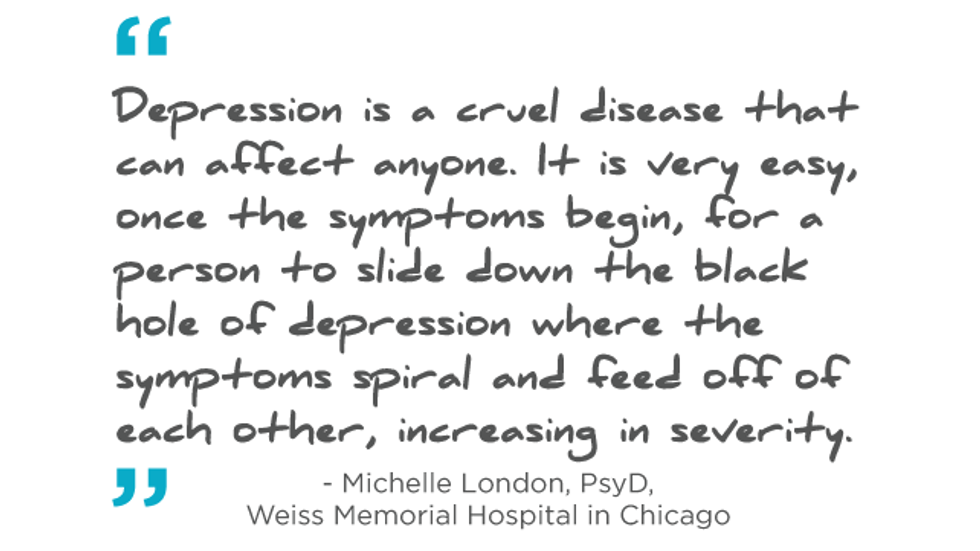Depression is one of the most common mental illnesses in the United States. While it is a phenomenon that strikes individuals of every gender, race, socio-economic status, etc., depression itself is highly stigmatized. Becoming educated about the symptoms, signs, and facts related to depression can help you help others.
The Symptoms
-Persistent sadness, anxiety, or feeling "empty"
- Sleep disturbances / change in sleeping pattern
-Sudden changes in weight / appetite
-Loss of pleasure / interest in activities once enjoyed
-Change in sex drive
-Restlessness and irritability
-Persistent physical symptoms that do not respond to treatment (such as chronic pain or digestive disorders)
-Difficulty concentrating / remembering / making decisions
-Loss of energy and fatigue
-Feeling guilty, hopeless, or worthless
-Feeling suicidal / thinking about death
(via the Anxiety Solution Centre)
Depression v. Sadness
Feeling sad is a normal emotion, and it will happen to everyone. Depression can involve sadness, but the two are not interchangeable. Depression takes over your feelings and emotions to a point where you feel hopeless. It feels like there is no point in doing anything, even getting out of bed is too much. There's a deep self-loathing that makes you feel like you deserve what you're feeling.
Types of Depression
Depression is not a "one-size-fits-all" diagnosis. Different types of depression require different treatments, which is why it's so important not to self-diagnose.
Major Depressive Disorder:Severe symptoms that interfere with the ability to work, sleep, study, eat, and enjoy life. An episode can occur only once in a person’s lifetime, but more often, a person has several episodes.
Persistent Depressive Disorder (AKA Dysthymia):A depressed mood that lasts for at least two years. A person diagnosed with persistent depressive disorder may have episodes of major depression along with periods of less severe symptoms, but symptoms must last for two years.
Seasonal Affective Disorder (SAD): The onset of depression during the winter months, when there is less natural sunlight. The depression generally lifts during spring and summer. SAD may be effectively treated with light therapy, but nearly half of those with SAD do not get better with light therapy alone.
Impact on U.S. Veterans
Veterans account for over 14 percent of depressed Americans (Veterans only account for 1 percent of the American population).
PTSD
Being exposed to trauma makes you 10 percent more likely to experience depression. Having PTSD increases your chance of having clinical depression by three to five times.
Every day, it is estimated that 22+ veterans take their own life.
Statistics
~In a given year, depression affects about 6.7 percent of American adults over the age of 18.
~Major depressive disorder is more prevalent in women than in men.
~Women attempt suicide four times more frequently than men, but three times more men die from suicide each year than women.
~An estimated one in 33 children and one in eight adolescents have clinical depression.
~Around 6 million elders experience late-in-life depression, but only 10 percent receive treatment.
~Depression causes over two thirds of suicides in the United States.
~80 percent of individuals experiencing symptoms of depression are not receiving treatment.
More Information
Worried about how you've been feeling? Take an anonymous depression screening.
Is someone you're close to struggling with depression? Learn how to help them through it.
Are you struggling with depression? Learn some self-help tools to improve your mood.
Get more detailed information about depression here.
Get population-specific information about depression here.
.
If you're feeling suicidal, click here or call the National Suicide Prevention Lifeline at 1(800)273-8255.
May is Mental Health Awareness month. Throughout the month of May, this author is writing articles to raise awareness about mental illness.


























